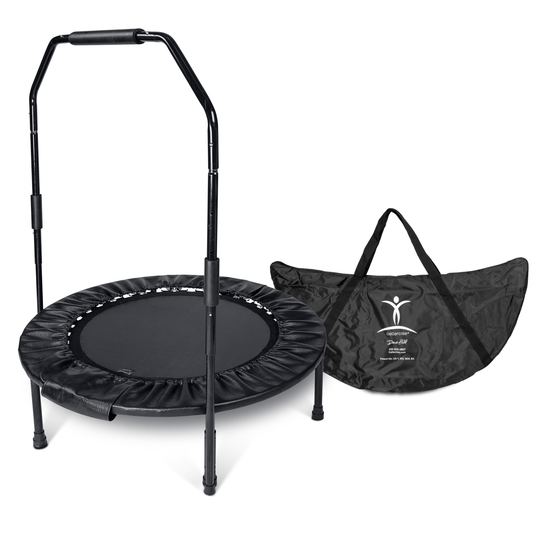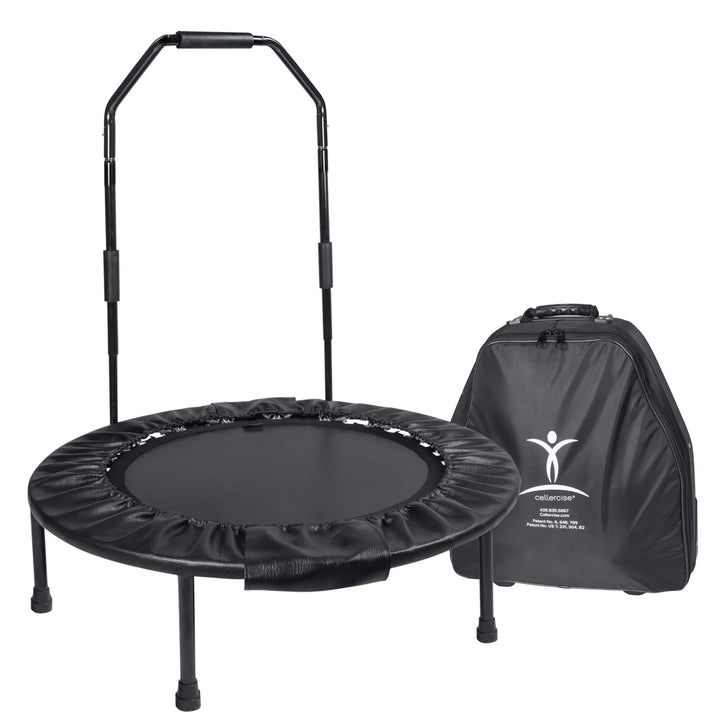Disclaimer: This Blog/Web Site is made available by the publisher for educational purposes only as well as to give general information & understanding regarding the industry. It is not to be used as specific medical advice or to replace consulting with your doctor. You should always consult with your doctor. By using this Blog / Web Site you understand that this Blog/Web Site should not be used as a substitute for medical advice from a licensed professional. For our full disclaimer, please read: http://cellercise.com/disclaimer
Osteoporosis can make it difficult to get the exercise you need. Low impact activities are hard to come by, especially for those with advanced osteoporosis. Let’s define exactly what osteoporosis is, how you can prevent it, and why rebounding might be your best option for physical activity.
Osteoporosis Defined
In its simplest form, osteoporosis is a disease that affects the bones. Osteoporosis happens when the body makes too little bone, loses bone density, or both. When this happens, bones become brittle, and are easily fractured or broken, even from seemingly harmless actions such as sneezing or being bumped. Women are more likely to suffer from osteoporosis, but that doesn’t mean that men aren’t at risk. Osteoporosis is a serious condition, especially when affecting older patients who may be slower to heal than younger carriers of this disease.
Prevention
The good news is that osteoporosis can be prevented and even slowed down in some cases. Nutrition is critical in preventing osteoporosis, and exercise can also help to prevent and slow the effects of this condition. Make sure you are getting your daily dose of vitamin D, magnesium, and calcium to help minimize the effects of osteoporosis. Physical activity is also important to preventing osteoporosis. In order to keep your bones healthy and strong, or to rebuild bone density, it is important to stay active and keep those bones working for you! A great way to do that is through rebounding, a low impact exercise that is ideal for those who suffer from osteoporosis.
Why Rebounding?
Rebounding has been used for decades by NASA as a bone density regeneration exercise for astronauts. Astronauts who spent time in outer space showed significant bone density loss in a short amount of time. When assessing the best methods of preventing and managing bone density loss, NASA discovered that rebounding provided significant benefits to their astronauts. The reason why rebounding provided such a significant benefit is due to the G-force that rebounding puts on the body. This positive stress stimulates circulation and muscle fiber building to activate cellular health and overall wellness. These findings are especially relevant to individuals who require low impact exercises that assist with building bone density, such as those who suffer from osteoporosis. Rebounding provides wonderful health benefits for individuals who suffer from osteoporosis. To learn about beneficial exercises or how to best rebound for your own health and wellness, be sure to check out our Exercises page.
Articles with this disclaimer may not represent the beliefs or core values of the Cellerciser® Program or Dave Hall. The above is simply a summary taken from the industry's general community to help readers stay up-to-date on what people are talking about.
NOTE: Remember to always consult with your doctor or health professional before starting new exercise routines.
Get Your Cellerciser® and start rebounding today!














